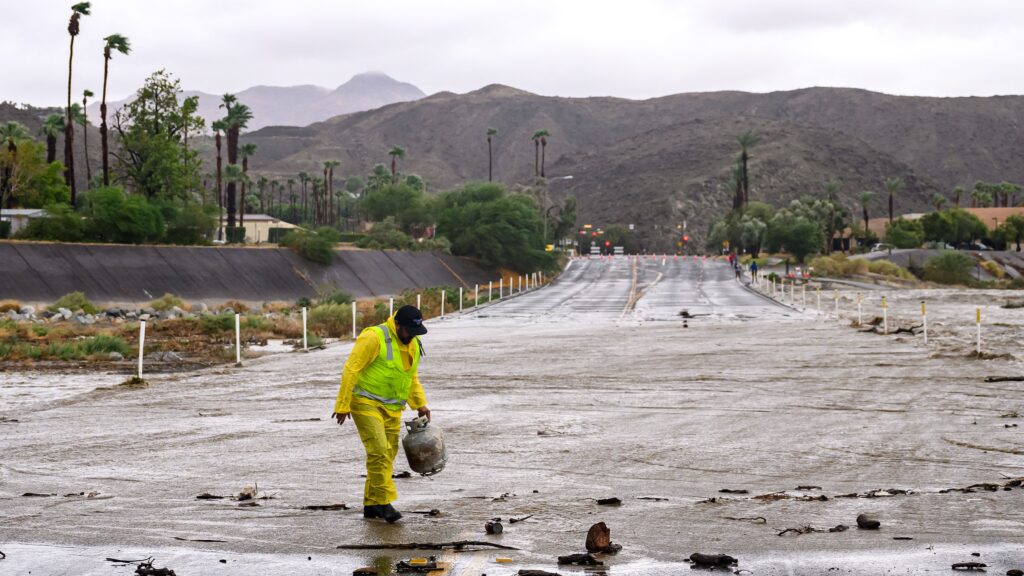Extreme weather fueled by accelerating climate change puts patients, providers, and health care facilities at severe risk, jeopardizing lives. Unpredictable shifts in weather patterns are creating new regional extremes, and communities have to adjust to survive.
During climate crises, health care providers and facilities must be ready to quickly adapt to shifting needs. Resilience efforts require advance planning for essential care services and safe storage of critical supplies and materials; addressing facility vulnerabilities; coordinating with neighboring health care facilities and suppliers; proactive engagement with vulnerable patients, and more.
advertisement
But many facilities are ill-prepared and unequipped to do this work, especially community health centers (CHCs) and rural hospitals, even though these same providers often serve the communities disproportionately burdened by climate hazards. Community health centers and rural hospitals typically have insufficient knowledge about climate resilience strategies and limited operational capacity to implement them, on top of competing priorities for limited financial resources, like staffing shortages and technology gaps in responding to the growing needs of their patients.
That’s a problem. A report by the Center for American Progress, which I work for, found that one in every three community health centers are located in areas of high relative climate vulnerability.
In 2023, 28 separate billion-dollar climate disasters occurred in the United States — the highest number recorded in a single year. Southern California experienced its first tropical storm in 26 years, causing flash floods, mudslides and even the flooding of an emergency department. And these threats are growing: Climate experts recently predicted 2024’s Atlantic hurricane season will be one of the most active on record.
advertisement
It’s impossible to overstate how urgently our nation’s health care system needs to be prepared to handle the pressure of continued operations amid escalating climate threats. Health care facilities are often on the front lines of climate disasters, providing emergency care as well as safe shelter. Beyond physical devastation, climate emergencies are also associated with mental health risks. Extreme weather can increase stress, anxiety, depression and substance use, with some groups experiencing higher risk levels than others — particularly low-income communities and communities of color.
Safety net providers such as community health centers and rural hospitals have a unique role to play in fostering climate resiliency. They tend to be trusted providers that are already familiar with addressing underlying drivers of health like lack of housing and food insecurity. They can translate that expertise into climate efforts, particularly by identifying and targeting services to protect patients most vulnerable to climate threats. Rural hospitals are often the only source of care in their regions. As major employers and social institutions, they’re also central to the economic stability and cultural fabric of a community — making their dependability crucial during a disaster.
Increasing these providers’ resilience against climate emergencies by targeting federal investments and implementation support for things such as reliable power supplies or stockpiles of medications and medical equipment can pay dividends in saved lives and reduced health care costs. It can also advance climate justice and equity for already marginalized communities. The Biden administration’s actions to address the climate crisis — including its implementation of the Inflation Reduction Act (IRA) — are helping health care organizations adapt to climate risks. New tax incentives are encouraging care centers to adopt alternative energy sources, and new grants are funding the installation of climate-resilient infrastructure.
In addition to improving resiliency and patient care, these investments save safety net providers money. For example, by installing solar or wind power equipment and generating their own energy, CHCs and rural hospitals can reduce their utility costs. This can give providers the power to generate more energy than needed to operate, which they can then sell back to the main grid or use to provide reductions on patients’ electricity bills. Such savings can enable investments in other improvements or priorities.
One challenge here is that health care providers are often either unaware of the opportunities and resources available through the Inflation Reduction Act or unprepared to take full advantage of them. The U.S. Department of Health and Human Services Catalytic Program, which targeted safety net providers, attempted to solve this issue by offering support to increase the uptake of IRA investments. HHS recently announced a second phase of the Catalytic Program, providing a great example of continued efforts to center climate justice by designing programs that expand under-resourced providers’ capacity to compete for grants.
But the coordination and strategy involved in resilience planning requires adequate funding. Spending legislation Congress recently passed is a step in the right direction, giving community health centers a much-needed funding boost. Still, some of the increase for these centers is time-limited through the end of the federal fiscal year in September. And funding for rural hospital grant programs remained flat this fiscal year, while rural hospitals continue to operate on thin margins.
The IRA has given health care providers vital resources to help strengthen their resilience and ability to mitigate climate threats. But policymakers must ensure that safety net providers can fully leverage these resources on top of managing core hospital operations. Supporting community health centers and rural hospitals in maximizing climate investments not only advances health equity, it also protects vulnerable communities from the most dangerous health risks during the next climate emergency.
Marquisha Johns is the associate director for public health at the Center for American Progress.

